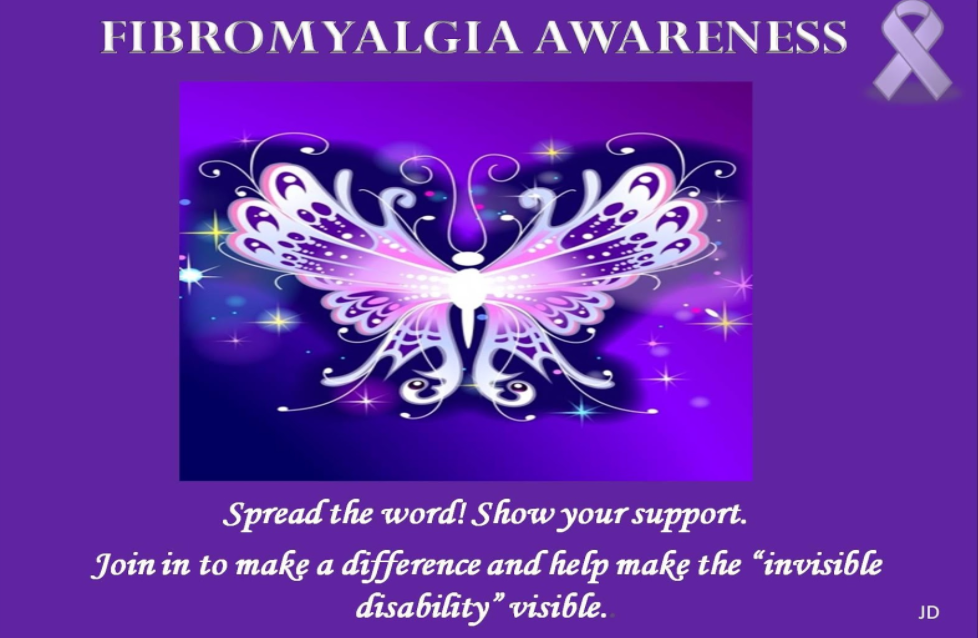Living with chronic pain can be arduous for most people. Although millions of people live with fibromyalgia, it is one of the most misunderstood and misdiagnosed illnesses of our time. On May 12th, please acknowledge International Fibromyalgia Awareness Day. There are more resources now than ever before on the causes and treatments for Fibromyalgia. http://www.may12th.org/
How Do I Live with Fibromyalgia?
One of the consistent questions I hear from a patient is; “How do I navigate my life after being diagnosed with Fibromyalgia?” The medications identified for Fibromyalgia other chronic pain syndromes have proven ineffectual in many cases. In most cases, the pain medication will reduce the pain by twenty percent. Medication management can be difficult due to the complexity of Fibromyalgia when treating for symptoms. These medications in combination can have debilitating side effects and impact overall health.
Although many of the natural remedies may help some, like allopathic medications, everyone is on the bell curve. In other words, some patients do well with natural remedies, i.e., nutrition, acupuncture, Bach flower essences, essential oils, etc., reporting a positive effect of little to no pain. However, others report an increase in pain or no effect when trying some of the alternative treatments.

If you are a human being you have experienced some pain from an injury or illness, however, it is difficult to understand how someone lives with chronic pain. Even during sleep, the pain can enter the dream state causing the images in the dream to mirror the pain. Also, pain causes disruption of circadian rhythms, lack of sleep contributing to high adrenaline levels associated with increased pain due to fibromyalgia. Patients with chronic pain report that they don’t want to complain or they would have to complain daily. They put a smile on and do the best they can, and it becomes the “invisible illness.”
My Experience
My personal story reflects my challenges with Fibromyalgia. When I first heard this diagnosis, I immediately began to panic with thoughts whirling around in my mind: How can I continue to work? How can I live with this full-body pain 24/7? My reaction was possibly stronger than other patients, only because I had worked with so many patients over the years that had Fibromyalgia. I had watched them deteriorate and fight for their life just to have a sense of functionality. Many of them ended up with severe depression and had difficulty walking. Some were in wheelchairs or walking with assistance from a cane/walking sticks. Now, I was the one to experience firsthand the impact of being told you will live the rest of your life with chronic full-body pain.
Interventions
In my private practice, I listened with an open heart to my patients describing the ongoing severe widespread body pain through their tears. I would document the increased levels of anxiety and depression that followed. I utilized various interventions, i.e., biofeedback and guided imagery, which reportedly helped some, but the chronic pain was relentless and dealing with it was overwhelming for the patient. Most of them had a difficult time with the prescribed medications reporting that the medications were making them sick with symptoms of nausea, headaches, increased anxiety, shaking, and extreme drowsiness.
Stress & Trauma
In my lived experience of over thirty years working in the social work and counseling fields, there is a high correlation for diagnoses of fibromyalgia based on repeated exposure to high stressors, which contribute to this diagnoses. My education and work experience helped me to understand the impact of trauma on chronic pain syndromes, however, as my primary care physician told me, it is time to be the patient.
There are no regrets about my work, and I have been honored to help others reflected by compassion satisfaction. I convinced myself I can be strong as long as I work hard to help others. I know now that I should have paid attention to my body and my mind as they cried out, “it is time to rest now.” When you are on-call 24/7 and children and families lives stirred by your interventions, somehow, you forget how to rest. Now I know what it means now by “self-care” being critical. By sharing this, it’s my hope that others learn from my mistakes. (McFeature, C.)
“If we explore pain as sensation made of non-pain elements, we might come to a place where we don’t feel so concerned when we are in pain. Maybe we have discovered impermanence by noticing that pain is always changing in one way or another. Perhaps our pain has nourished compassion within us as we realize that many others have pain like ours. We might even look at our pain as a gift that teaches us patience, gives us strength to endure, makes us more mindful, and reminds us that our life span is finite, our connection to life fragile.”
-Roshi Joan Haliafax
Treatment Plan – A Guide For Daily Tasks
As with any good treatment plan, it should be holistic in nature to address the complexity of chronic pain. Below are some things that I have found to help find a balance and a way of living with chronic pain. These help me to reduce the resistance and clarify what I can and can’t do.
- Evaluate your current life situation, i.e., am I able to continue to work full-time, can I work part-time, can I clean daily and take care of the children under the age of five? This exploration is the beginning of finding ways to live each day to its fullest potential.
- Develop a daily routine to help your body, mind, and spirit adjust to the new lifestyle. This routine includes good sleep hygiene to try and get 6 to 8 hours of sleep. In the morning make sure that you eat a healthy breakfast. Your body will require protein to produce energy. Also, consider taking an Epsom salt bath first thing in the morning to help with the pain and stiffness. You will also want to consider some form of exercise so that your body will continue to circulate your blood and get oxygen to the brain. Daily activity can also boost endorphins. Listen to your body to see what you can reasonably do so that the pain levels don’t increase. Taking a walk, doing Tai Chi for 20 to 30 minutes, meditation, stretching, or dancing helps manage the pain. Also, create a peaceful environment when you are home, i.e., light a candle, get rid of clutter, read a good book.
- If you are prescribed medications, try to be consistent with your medication taken as prescribed so that you don’t get behind the pain threshold. Remember that some medications, such as those with the opiate base, have half-lives. The doctor may adjust your medications by increasing the dosage; however, at some point, the medication will stop working and may even begin to cause a rebound effect. Explore natural remedies and use heat and cold alternate to help with muscle pain.
- Distraction is probably the number one defense for chronic pain. Find things to do that bring you joy, i.e., creative projects like painting, writing, drawing, playing a musical instrument or listening to some great music. I enjoy all of these things and have recently begun coloring pictures for my grandchildren. Oh yes, if your children are still at home or you your grandchildren are close by hanging out with children will give you joy and a childlike wonder of life.
- Compassion satisfaction is probably the most helpful. Compassion satisfaction is the result of giving to others and seeing people happy and well. I find that when I am helping others that I tend to shift focus away from the pain.
- Gratitude can be lost in the midst of chronic pain and is too easy to find yourself in the victim role. You may have days where you are in so much pain that it is hard to remember gratitude. Gratitude is always just a breath away.
- It is important to be mindful of each day and take the time to thank your body for fighting the pain. In turn, listen to your body to know when you must slow down and pace yourself. If you don’t pace yourself every day, you will find out the following day you can’t get out of bed. Pacing yourself will be an ongoing life lesson, and you may decide that you are willing to deal with downtime because the psychological victory of pushing through the pain is worth it especially when you do something you love.
There is a way to navigate a life of chronic pain, and it is not for the “weak.” Remember to breathe deeply. Say “no” when you don’t feel well. Pace yourself and listen to your body. You will be grateful for the gift of mindfulness, as chronic pain will keep you very mindful.
“Live, Laugh, and Love.”
Cinthia McFeature, Ph.D.
References
McFeature, B. & Herron-McFeature, C. (2017). Integrated health – HeartPath practitioner assessment and intervention for the trauma-exposed patient. Melbourne, FL: Motivational Press, Inc.


Recent Comments